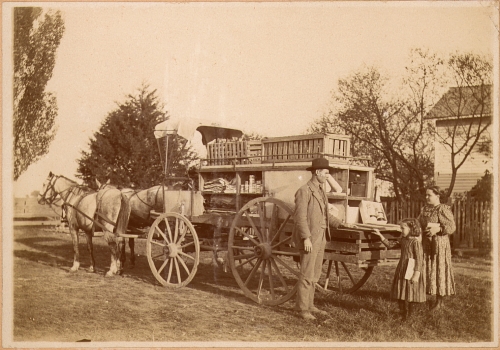posted: February 18, 2018
tl;dr: I’ve never met a salesperson who couldn’t sell something that doesn’t exist...
That tl; dr: is a bit tricky: a triple negative. Let’s parse it carefully, and we’ll get to the core of the point I’m trying to make.
I’ve been in high-tech product development my whole professional life, and “something that doesn’t exist” is a product that requires further development to meet the potential customer’s desires. It stands in contrast to a product that does exist, which is a product that already has all the features the customer desires, or can be convinced that they desire. To deliver a product that does exist, all that needs to happen is a physical delivery of the product, or an enabling and authorization step to give the customer access to the product.
So the statement could be rewritten as: “I’ve never met a salesperson who couldn’t sell a product that requires development to meet the customer’s desires”. We’re now down to just a double negative, which can be rewritten as: “All salespeople can sell a product which requires development to meet the customer’s desires”.
Now the point perhaps is becoming clearer. When a salesperson meets with a customer, the salesperson has a portfolio of the company’s existing products available to sell. Often the customer wants (or thinks they want) something above and beyond the capabilities of an existing product. One approach to getting the sale is to listen to the customer state their desires and then offer the customer an enhanced product that is an existing product plus the features that the customer wants.
Customers can be very demanding
It’s certainly possible to do this, and sometimes it can even be successful. But even in the successful cases it will take a while to actually close the deal, develop and deliver the product, and have money exchange hands, including the salesperson earning a commission. The salesperson will have to bring the opportunity back to the company, engage in an internal negotiation to get the new features onto the product development work schedule, and then hope that the product gets developed and does not get pre-empted later by an even better business opportunity for the company. This introduces risk and uncertainty.
The best and most successful salespeople, in my decades of experience, are those who are best able to sell the company’s existing product portfolio. Their deals close faster, the products get delivered to their customers faster, the company gets paid faster, and the salesperson gets his/her commission sooner. These salespeople realize the risks of selling something that doesn’t exist. They also internalize the fact that if the company has customers for an existing product, there should be other customers out there that also could use that existing product, unless the market for that product is 100% saturated, which it rarely is.

This sales strategy hasn't changed in hundreds of years
One of the best salespeople I’ve ever worked with has a succinct expression for the attitude that a successful salesperson needs to have: “Sell what’s on the truck”. This harkens back to centuries ago, when traveling peddlers would show up in a town in a horse-drawn cart containing all the wares available to sell. The peddler could only sell what was on the cart. Similarly, even in this day some tool vendors send trucks out to job sites to meet the needs of busy craftspeople. If the craftsperson wants a 15mm box wrench and the tool vendor doesn’t have one, maybe the tool vendor can convince the customer to buy an open-ended adjustable wrench, because that’s what the tool vendor has on the truck and it will get the job done.
Want to be successful in your sales career, whether you are a peddler, a tool vendor, or in high-tech sales? Sell what’s on the truck.